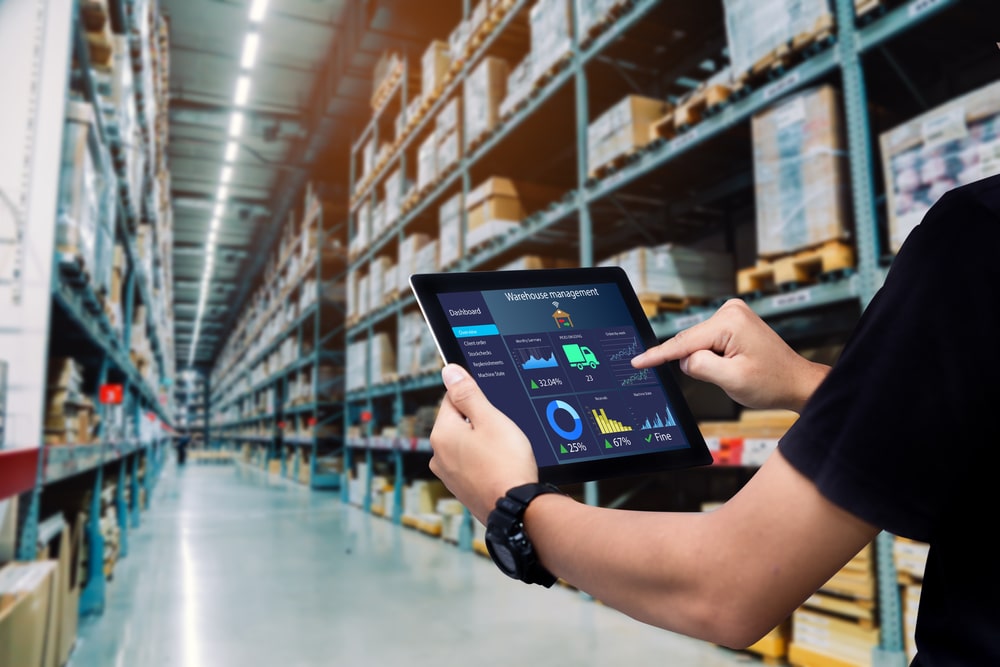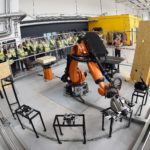Features - Development
Warehouse Efficiency: Looking at the Positives

Across all industries, the development and need for innovative solutions is a continuous cycle. In the logistics industry, the need to be efficient and flexible is at the core of most logistics businesses, especially with a greater lean on e-commerce in the recent past. The change in consumer demand and buying behaviour has had a knock on effect throughout all supply chains as customer expectations, in B2C and therefore also B2B, drastically increased to get what they want, when and where they need it. The pandemic therefore forced businesses to reevaluate their business solutions and ask themselves; how can we become more productive and competitive when the world returns to the ‘new normal’?
Business efficiency is the key, and the developments in lithium-ion batteries for materials handling equipment have unlocked the ability for businesses to create a highly efficient and lucrative 24/7 logistic operation. Alexander Baal, Director Sales Operations, Jungheinrich UK highlights the benefits of deploying a lithium-ion powered materials handling fleet in the bid to aid further productivity and meet customer demands.
Around the clock demand
Battery technology is an area constantly under review to transform warehouse performance and adaptability which should be embraced throughout the logistics supply chain. As businesses deal with rising consumer demand and need to operate in more cases 24×7, in order to fully exploit the benefits, it’s critical to ensure that the battery technology in place is designed for a 24-hour operation. Additionally, research and development has long been undertaken to review the safety and energy efficiency of battery technology. As consumers and businesses alike have become more concerned with sustainability, battery technology is evolving fast, with vendors increasing their efforts to produce smarter lithium-ion batteries.
Lithium-ion batteries have an extended life expectancy of many thousands of full cycles and a higher number of partial cycles by comparison to the average life of a lead-acid battery. Likewise, enabling operations to capitalise on opportunity charging during short scheduled breaks, rather than waiting for extended periods of time for the battery to charge means that operators can deploy round the clock operations – an essential component for the modern industry.
We’re going to need a bigger battery, or are we?
A common mistake organisations make when it comes to materials handling equipment is thinking that a bigger battery will make their workflow seamless. With businesses working longer and harder than ever before, it’s important to be able to utilise the trucks longer without the compromise being on battery replacements, aisle width or battery life.
Significant developments in opportunity charging means that companies can extend the usable lifespan of ageing batteries, thus reducing the need to change batteries out and keeping your operation working at ideal capacities. And irrespective of how long the truck is working, you can operate within the tightest aisle width.
A warehouse or logistics environment is unique compared to other battery-powered vehicle environments. Electric automotive manufactures are constantly striving for higher density and lower weight batteries with the best range and shortest charge times. However, the same constraints are not present in a warehouse for Materials Handling Equipment as the charger is almost always available close by and charging can be done regularly whilst the truck is stationary for a short period of time. Therefore, lithium-ion batteries allow companies to maximise the usage of their machinery, making a more efficient supply chain and optimise valuable space in their premises.
Lead-acid vs. Lithium
Lead-acid batteries have always been a relatively low-cost and reliable solution for material handling equipment, but it has the lowest energy to volume and energy to weight ratio out of the battery solutions available. This made it ideal for forklifts in which the size and weight was an integral part of the design and stability of the truck.
Lithium-ion batteries are on the opposite end of the spectrum of the energy density scale from lead-acid batteries. They pack the highest energy to volume and energy to weight ratios, meaning they can be placed in smaller spaces to make clean sheet designing of a truck a possibility, and then supporting counterweights weights can be positioned lower down to improve stability.
With different energy solutions now widely available, there is still no one-size-fits-all power solution, as the intricacies of individual applications will always differ. That said, there is still a place for lead-acid energy solutions within the materials handling industry for specific applications in the same way that lithium-ion solutions are optimum in others. However, lithium-ion’s offering is far more flexible and durable for the active user by reducing downtime, improving production workflow and maintaining the highest level of quality output.
Conclusion
When trucks move into multi-shift or intensive applications, lithium-ion becomes the better solution as it negates the need for battery changing. This is because lithium-ion is the only battery that can recharge much faster than it discharges. In fact, any break of more than 10 minutes can be identified as a possible charging opportunity with as much as 50% recharge being achieved in just 30 minutes. In addition, by working closely with the client to plan shift patterns for optimum charging patterns, it is also possible for one charger to be available for multiple trucks, ultimately saving time, space and money.
The past twelve months have seen a huge influx of change in all matters of industries and it is clear that the rise in e-commerce has accelerated the need for a smarter, efficient and flexible supply chain. Lithium-ion batteries have certainly stamped out the room for error and delay within a warehouse environment, by reducing charging time for batteries, workforces have been able to keep up with demand efficiently, productively and most importantly – safely.
If you would like to read more stories like this, then please click here
Related Articles
More Features
- Why early MEP design collaboration holds the key to smarter buildings
24 Jun 25
Working closely is essential to ensure that all aspects of a building’s design contribute to
- Risk Vs Reward: Labour’s ambitious plans for stalled housing developments
10 Jun 25
Labour’s plans to allow local authorities to take control of stalled housing sites signals bold
- Insight: Digitalisation and the future of low-carbon housing
23 May 25
Digitalisation is reshaping homes, playing a pivotal role in reducing carbon emissions and enhancing energy






